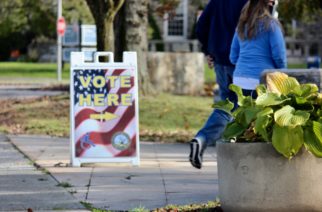
To the editor:
There are good reasons for “MTA crisis weighs on Governor’s approval rating” (Forrest Miller — July 17). Consider his declaration of a “State of Emergency” for the Metropolitan Transportation Authority and funding commitments. Governor Andrew Cuomo is mistaken in his belief that he can have the MTA dispense with normal procedures for ordering new subway cars, replace broken signals, installing new tracks and the like.
A significant percentage of New York City Transit subway car procurements along with many other capital projects and programs, are funded for the most part by United States Department of Transportation Federal Transit Administration grants. These federal funds going to NYC Transit, Long Island Rail Road, Metro North Rail Road and MTA Bus. They will total almost $7 billion between now and when the $32 billion 2015-2019 MTA Capital Program Plan is completed. These are subject to USDOT FTA federal procurement rules and regulations including Buy America requirements.
Contrary to Cuomo’s perceptions, there are very few rail car manufacturers in the USA to supply transit agencies around the nation. As a result, there is limited competition between a handful of potential suppliers. The MTA, NYCT, LIRR & Metro North are competing against other transit agencies, who operate subway and or heavy commuter rail around the nation for time and space on the handful of manufacturer’s production line.
As a result, over past MTA Five Year Capital Programs, NYCT has averaged five years. This process begins from the development of bid specifications, advertising, and award. This is followed by vendor mobilization, pre-production, assembly, testing, delivery and acceptance from the first to the last subway or commuter rail car.
Purchasing several hundred or more subway cars is not like us going to a local car dealer. Automobile manufacturers have a series of basic models with a variety of optional add-ons produced each year in the hundreds of thousands. Subway and commuter car manufactures do not have a ready supply of off the shelf stock on hand, ready to drive off the lot. Each transit agency has different bid specifications to meet their respective physical systems, maintenance and operational needs. The winning bidder needs time to develop a prototype car followed by delivery of one ten car train set. The NYCT needs time to run these vehicles in revenue service for thirty or more days. This is to insure they can survive the challenges of operating in the nation’s largest subway system. They have met bid specifications. NYCT operations and maintenance groups need time to make sure they have the resources to manage both this new and existing fleet. Only then, after completion of NYCT internal review and sign off by various departments can the manufacturer begin full production. If you are lucky and there are no hiccups during production, this might average ten cars or one train set per week. Each car has to be inspected and accepted at the point of production and again after delivery which takes time.
Cuomo should visit any subway car plant and see for himself before complaining. He should also meet with the handful of hard working MTA HQ and NYTC procurement, operational and maintenance staff assigned to manage subway car procurements. This would help him develop a better understanding of the process from start to finish. It could result in having Cuomo avoid making inaccurate statements of why new subway cars can’t be purchased, built and delivered in months rather than several years.
Cuomo still needs to come up with the outstanding balance of $5.8 billion that he still owes toward the $8.3 billion shortfall to fully fund the $32 billion 2015 – 2019 MTA Five Year Capital Plan. The MTA can’t afford to wait until 2018 or 2019 for both $5.8 billion and additional $1 billion recently pledged by Cuomo in response to the ongoing subway and LIRR Penn Station crises. Ditto for Mayor Bill de Blasio to deliver the balance of $2.5 billion which he also pledged to finance the same plan.
Next, have MTA reprogram $695 million Metro North East Bronx Penn Station Access, $1.7 billion Second Avenue Subway Phase 2 & $1.95 billion LIRR Main Line Third Track to help fund upgrading NYCT Subway System and LIRR Penn Station Signals. This would provide over $3 billion as a down payment against $20 billion needed to bring NYCT Subway System Signals up to a state of good repair. All three cancelled projects can be funded out of the next MTA 2020 – 2024 Five Year Capital Plan. This still provides ample time for both Metro North East Bronx Penn Station Access and LIRR Main Line Third Track project completions to coincide with LIRR East Side Access to Grand Central Terminal by December 2023 or 2024.
It is time for the MTA to stop wasting millions of dollars on transportation feasibility studies for future system expansion projects costing billions that will never happen on our life time. Do not initiate any new system expansion projects until the MTA and each operating agency, including NYC Transit bus and subway, MTA bus, LIRR and Metro North RR have reached a state of good repair for existing fleet, stations, signals, interlockings, track, power, yards and shops. Ensure that maintenance programs for all MTA operating agencies assets are fully funded and completed on time to ensure riders reliable service.
Starting in 1981, under past MTA Five Year Capital Plans, both the City and State collectively cut billions of their own respective financial contributions. They repeatedly had the MTA refinance or borrow funds to acquire scarce capital funding formerly made up by hard cash from both City Hall and Albany. On a bipartisan basis, this included past Governors Mario Cuomo (Dem), George Pataki (GOP), Elliot Spitzer (Dem) and David Paterson (Dem). Governor Andrew Cuomo (Dem) continues to honor this practice. His amendment to increase the MTA $29 billion MTA Five Year 2015 – 2019 Capital Program Plan by $3 billion to $32 billion is financed by increasing long term MTA debt $1.6 billion. This was approved by the MTA Board but still requires approval by the Albany MTA Capital Program Review Board. That body is made up of one representative each from the Governor, Mayor, State Assembly Speaker and State Senate Majority Leader. The mayor’s representative can only vote on NYC projects. All Cuomo has done is restore $3 billion cut from the original proposed $32 billion MTA Five Year Capital Plan (which he previously referred to as bloated and unnecessary) from 2015.
Most dollars including $1.95 billion for LIRR Main Line Third Track and $700 million for Second Avenue Subway Phase Two are going toward system expansion projects versus solving more critical state of good repair projects and programs today.
Too many career politicians for over 36 years have insisted that the MTA continue financing more and more of the Capital Program by borrowing. This is no different today. As a result, 17 percent of the annual MTA budget goes for covering the costs of debt service payments. By the next MTA Five Year 2020-2024 Capital Program Plan, it will grow closer to 20 percent. This means less money is available for operations to provide more frequent and safe service to riders. It also means there is less money just to maintain the state of good repair, safety and basis.
Larry Penner
Great Neck
Larry Penner is a transportation historian and advocate who previously worked 31 years for the US Department of Transportation Federal Transit Administration Region 2 NY Office.









